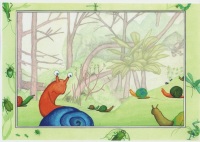Ever since I was small, my parents told me we had to eat five or more vegetables a day. Unfortunately, while the fruit and vegetables may look the same as when I was a child 50 years ago, today they are inferior. The other day I spoke with a friend who moved here from Europe in the 70s. I mentioned I didn’t want to eat genetically modified fruit or vegetables. She said, “But, we live in New Zealand. They don’t grow genetically modified plants here.”
The truth is farmers worldwide use hybridized and genetically modified seeds and spray their fields with chemical fertilizers, fungicides, and herbicides. Researchers like Weston A. Price have proven that vegetables have dropped their nutrient content by 90% since the 1930s. These days the only way to eat nutrient-dense food grown in healthy soils is to buy or grow our organic fruit and vegetables. I pay a lot for organic produce. At the same time, I am developing and expanding my vegetable patches so we can grow more of our food.
I’m keen on planting more fruit trees at home. However, space is limited as we already grow a fair amount. There are the veterans my parents planted: the plums, lemons, bananas, and grapefruit. There are three feijoa and two apple trees I have put in, as well as two fig trees, although I’ve espaliered the latter to keep them from outgrowing the section. Then I have lime, clementine, and kumquat trees growing in large outdoor pots. To add more at this stage, I have to consider dwarf varieties. The dwarf trees are too small to yield enough fruit, so we buy semi-dwarfs. I’ve planted nectarine and apricot. When buying trees, try to buy direct from the nurseries. And check the labels first to make sure the trees are self-pollinating.
Once home, plant trees in spots with adequate sun. Fertilize regularly. Prune fruit trees at least twice a year. However, do not prune when borer is flying, which in the southern hemisphere is November, December, and January. Another tip is to feed your fruits and vegetables, especially citrus trees with trace elements. Trace Elements Chelates is a good source, available in New Zealand.
With your vegetable beds, keep it simple and plant the vegetables you want to eat. But remember to dig in your ‘soft’ fertilizers like blood & bone or fertilizer teas to the beds and leave for a week before planting.*See my post, Backyard Gardeners2, for the recipe for fertilizer teas. If you live in a highrise or apartment with no access to a garden, it is possible to grow vegetables in planters, grow herbs in pots on windowsills, and have small cloches indoors. However, when you grow plants this way, you provide every nutrient the plants could need, which takes special know-how. Try googling a step-by-step guide or looking it up on YouTube for a tutorial.
Here in New Zealand, we still have a month of winter before us. It has been an ideal time for growing spinach, kale, silverbeet, and brassicas like cabbage or broccoli. I have two beds growing broad beans, which I will dig into the ground next month. It will fix nitrogen in the soil, ready for planting spring crops in October.
August is the time to plant potatoes as the seed potatoes become available in New Zealand prior to spring. You can grow them in garden beds or in containers.
The container method requires a Flexi tub, available at hardware stores for $7 – $11. Drill four holes near the bottom but on the sides not on the floor of the tub. Quarter fill the container with potting mix. Don’t be tempted to use compost in planters or containers. Always use high-grade potting mix or garden mix. Space out about six seed potatoes on the soil and cover with a bit more potting mix. Water them daily and make sure to liquid feed every two weeks. And remember to vary the fertilizers, to keep things lively.
When your potatoes sprout green leaves, add another layer of the potting mix up to the level of the first two leaves. Carry on caring for your plants and as the plants grow, keep filling with potting mix. After four to six weeks, the tubs should be nearly full. The plants might eventually flower and then wither away. At that point, tip out the tubs and harvest the potatoes.
The garden method requires a trench dug across the bed half a spade in depth. Put seed potatoes spaced apart at the bottom of the trench and cover lightly with soil. As the green shoots and leaves come up, add soil and keep adding earth until you have built your trench into a mound running along the vegetable patch. When the greenery above ground starts to fail and wither, it is time to dig up your crop of potatoes. Yum! There is nothing like the taste of homegrown.
Happy Gardening. More next time, green thumbs.
Talk to you later.
Keep creating!
Yvette Carol
Life can be difficult if all you see is everything that’s wrong. Start focussing on what’s right, what’s good, what’s constructive. If you want to feel better, you’ve got to think better. ~ Mufti Menk
*
Subscribe to my newsletter by emailing me with the words Newsletter Subscription in the subject line to: yvettecarol@hotmail.com





















Reblogged this on NEW BLOG HERE >> https:/BOOKS.ESLARN-NET.DE.
LikeLiked by 1 person
Thanks, Michael!
LikeLiked by 1 person
Wow, you had very caring parents, Yvette! I can’t remember from the childhood eating more than one vegetable per months. But you are in New Zealand, also a better weather for growing differenct vegetables. Here we are in the so called “Bavarian Siberia”. Only potatoes like to stay here. Lol Best wishes, Michael
LikeLiked by 1 person
Hi, Michael. My parents had a way bigger vegetable patch than I do, so I still have a long way to go. Gosh, I can’t imagine only eating one vegetable per month, although, I have to say, I love potatoes. Thanks for stopping by!
LikeLike
Yvette, five vegetables a day is a bridge too far here in the states. We were so happy when our oldest decided he loved salads, so maybe he could meet the task of five a day. Keith
LikeLiked by 1 person
Thanks for telling me, Keith. I find the insight into how people live in other countries genuinely fascinating. My youngest is the same as your eldest. When he was tiny, I used to have to jump through hoops trying to get him to eat meat, and he still prefers fruit and vegetables even today.
LikeLike
Good advice Yvette. Kerry’s (husband) plot at Ngataringa Organic gardens, is looking great, with the trenches done for the potatoes. His broad beans, spinach and Brussel sprouts are looking good too. Cant wait for harvesting.
LikeLiked by 1 person
Sounds great, Vivienne. Lucky you to have your Kerry and his gardens. Yum!
LikeLike
Haha I love this post. Reminds me a little of my site, all about plants. Love it, keep up the good work! 🌱😁
LikeLiked by 1 person
Thanks! I’ll check it out.
LikeLiked by 1 person
Thank you so much. I think you will enjoy it 🌱😁
LikeLike
Congratulations Yvette on all your hard work in your vegetable garden and orchard. Thanks for sharing your experience so vividly in this post.
LikeLiked by 1 person
My pleasure, Susan!
LikeLike